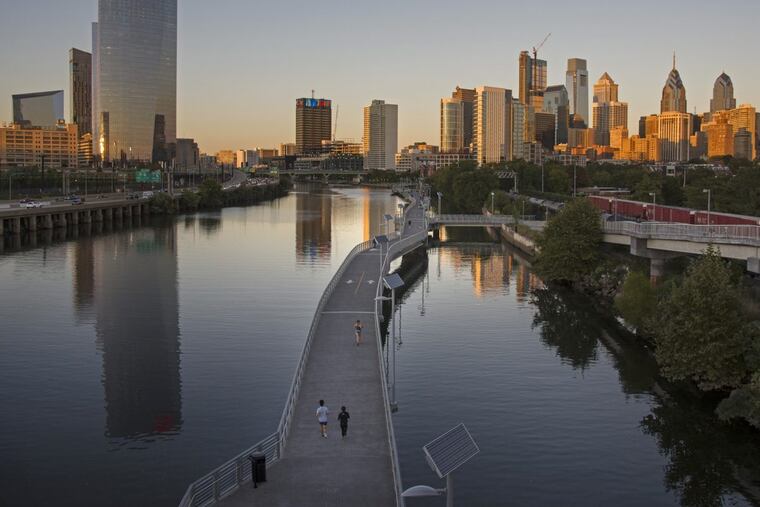Riverfronts bringing new life and energy to Philadelphia | Editorial
The new riverfront experiences are signs that Philadelphia is transforming into a modern urban center, one where residents are discovering the passive and active joys of living and working in a reimagined city.

The sloppy mix of ice and snow on the first day of spring made the thought of running, biking, and relaxing along the city's riverfronts remote. But not even inclement weather has kept local visionaries from coming up with ideas to make the rivers even more pleasant in springs to come.
With a recent $200,000 grant from the William Penn Foundation, the Delaware River Waterfront Corp. is developing ideas for how to bring more people to the riverside on SEPTA. The Delaware has become a hot destination with construction of the Race Street Pier and the successful Spruce Street Harbor Park, with its hammocks, cooling fountains, and beer garden.
The crowds that show up on warm days would have been unimaginable even a few years ago, when big box stores and high-rise condos that shut the public out were being built. The new focus is on better connecting the city to the river — a connection broken with the construction of I-95.
Further into the future — around 2021 — planners hope to begin construction to cap I-95 along the Delaware, between Chestnut and Walnut Streets, to create a park joining Center City with the river.
For the Schuylkill riverfront, the U.S. Department of Transportation issued a $12 million grant to help link the Schuylkill River Trail, which has made the river more accessible to the public, from its southern end at Christian Street to the Grays Ferry Crescent. The plan includes a cable bridge. Construction could begin in 2020. Costs are estimated at $36 million. The money would come from government sources as well as the William Penn Foundation and others.
Already, the Schuylkill riverfront, with its proximity to Fairmount Park and the museums, is among the liveliest spots in town. In all weather, it's bursting with rowers and runners, cyclists and walkers. On the river's west bank, work began last year on Schuylkill Yards, a complex of commercial, residential, and recreational development that can turn the dead zone around 30th Street Station into a neighborhood.
Recent and future changes are elevating the rivers from dirty old navigation routes in a once=industrial city to cherished assets. New riverfront experiences are signs that Philadelphia has become a modern urban center where residents are discovering the joys of living and working in a reimagined city.
And the changes run even deeper, says architect Harris Steinberg, head of the Lindy Institute for Urban Innovation at Drexel University, who worked on the Delaware River plan. He says the upgrades reflect the city's improving sense of self.
But all these advances present the new challenge of managing growth without losing the historic structures that underlie part of Philadelphia's identity.
That's a tough job. After preservationists bucked at the thought of a 24-story Toll Bros. tower on Sansom Street, which would replace several Jewelers Row buildings, Mayor Kenney appointed a task force to find the balance between preservation and progress.
Steinberg, who heads that task force, says the balance can be found. "Is Philadelphia ready to seize on the momentum? I think so," he said.
He's right. Spring, the season of hope, is here. The attractions and improvements to Philadelphia's rivers offer hope for all seasons.